Japanese school uniforms: A tale of imported culture & fashion now spreading across the globe

Sailor-style outfits, blazers, and stand-up collars are just some representative items from Japanese school uniforms, which are now spreading across the world as part of the "Cool Japan" trend. Behind the skirts and the sleeves, however, are decades' worth of imported culture and generational changes.
In July 2011, some 30 youths of different ethnicities were found on stage in a Japanese fashion show in Paris as part of France's big annual Japanese culture event, Japan Expo. The models sported checked miniskirts, cardigans, blazers, and other items found in modern Japanese school uniforms.
In addition to cute outfits, the performances on the catwalk were abundant in "peace" signs and other typical Japanese gestures and poses -- followed by loud applause from the audience -- all of which underscored the "kawaii," or cute, appeal of Japanese culture, which seems to be turning into an internationally accepted term.
The fashion show was organized by school uniform retailer Conomi, which has five shops, including two in Tokyo's largest youth fashion area, Harajuku.
"The event made me realize that Japanese school uniforms are no longer perceived as 'cosplay,' but as real fashion," says Conomi's Vice President, Toyoko Yokoyama, 36, who can't shake off the excitement she felt at the show.
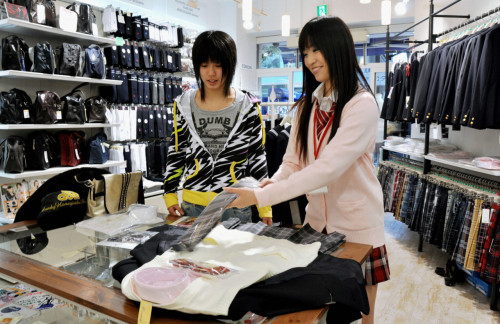
Conomi's school uniforms are original items that are not part of any school's designated uniforms. Nevertheless, youngsters -- often accompanied by their parents -- are flooding Conomi's shops, passionately choosing neckties, sweaters, blazers, skirts, and other items. In other words, even students who don't attend schools that require students to wear uniforms are keen on wearing them as fashion, company officials say.
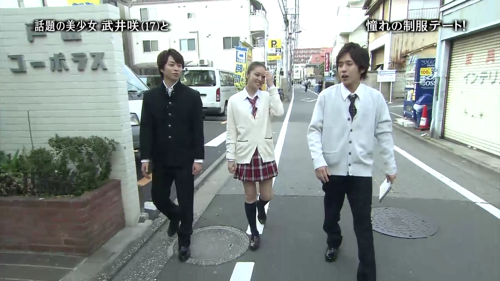
"It seems that many youngsters perceive school uniforms as a type of clothing they can wear only when they are young -- a limited sort of fashion 'privilege,'" Yokoyama says. "Recently boys are increasingly visiting the shops too. It seems that their mothers are trying to make them look like handsome school boys from popular TV dramas."
Whether in Japan or abroad, it seems fair to say that school clothing is at the forefront of "kawaii" and "kakkoii" (cool) fashion for youngsters.
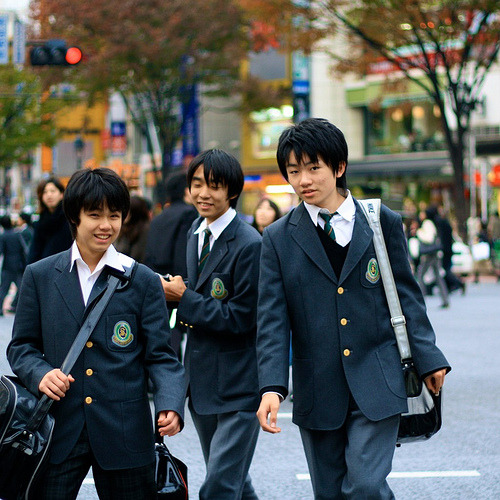
Looking back on the history of uniforms in modern Japanese education after the promulgation of the school system in 1872, the standard school uniform style for female students was "hakama," a type of traditional Japanese long skirt. This particular style spread across the country around the beginning of the 20th century, and quickly became a symbol of female Japanese students.
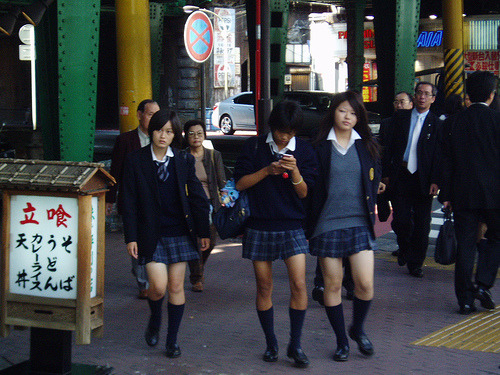
Originally, the female school hakama used to be colored purple, but this was later changed to "ebichairo," or brownish-crimson, as purple in Japan was considered a noble color, traditionally worn by aristocrats. According to some historical sources, following the color change, female students were nicknamed "Ebichairo Shikibu" after the author of "The Tale of Genji," Murasaki Shikibu, the first part of whose name means "purple."
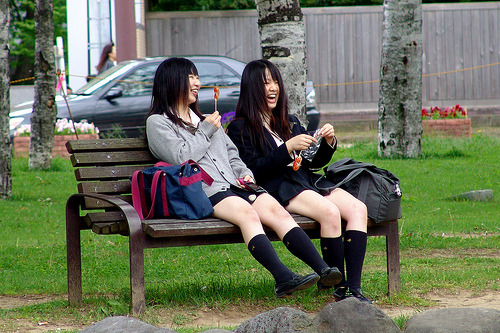
However, the hakama style of clothing proved to be too expensive for young women who were interested in competing with each other in fashion and looks, and troublesome when it came to washing. For these reasons, female school clothing gradually shifted to Western-style outfits.
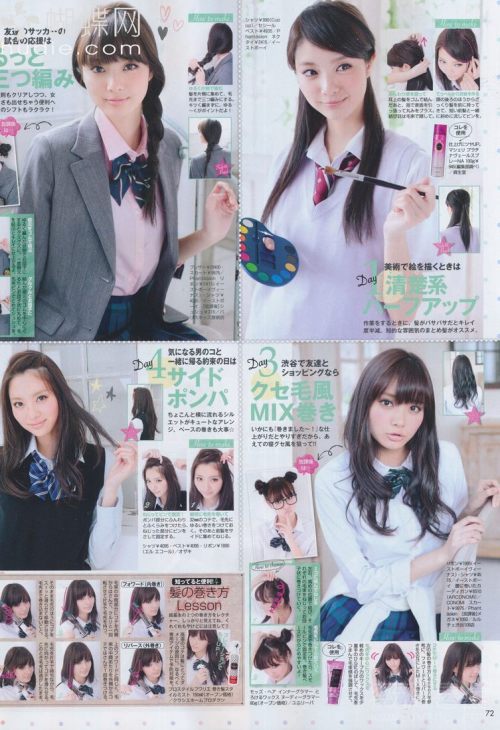
The two-part sailor-style school uniform worn today was first introduced in Japan at Fukuoka Jo Gakuin Junior and Senior High School in Fukuoka Prefecture, some 90 years ago, in 1921. The figure behind the switch was 27-year-old American missionary Elizabeth Lee, who was serving as the school's principal at the time, and trying to teach the girls to play volleyball.
At the time, all the girls wore Japanese-style clothes, which were restricting their mobility. After watching her students struggle to move around, Lee came up with the idea of using sailor-style clothes, which she herself liked to wear. The sailor outfit, which was traditionally worn by members of the navy, was back then a popular trend among women in the U.S. and Europe.
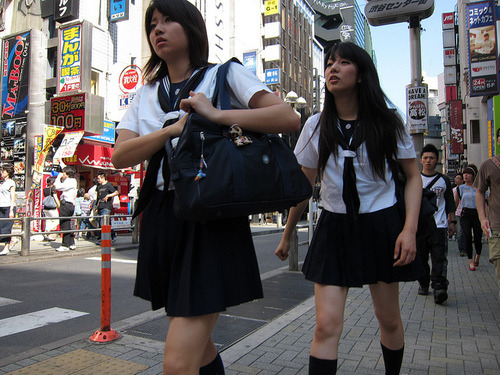
The sailor-style uniform, which was perfected after a series of trial pieces had been made at a Western-clothing store near Fukuoka Jo Gakuin, quickly became popular across the country, and turned into a major Western fashion hit.
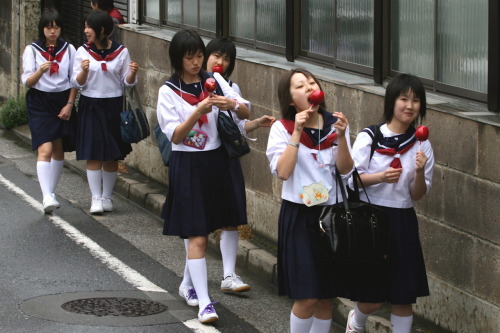
Its standard style -- dark blue cloth, a dark red necktie, three stripes of dark red on the collar and the cuffs, and a white anchor mark above the chest -- has not changed over the past 90 years. It is not uncommon for students at Fukuoka Jo Gakuin to wear the same uniform their mothers and grandmothers wore when they were students.
Among them is Mei Nomiyama, 15, a first-year high school student at Fukuoka Jo Gakuin.
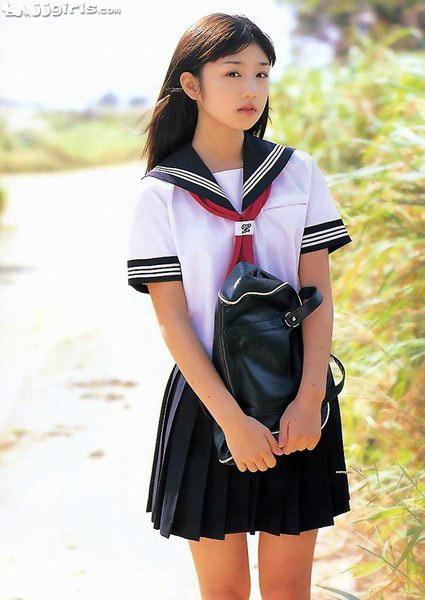
"I can feel the history," she says. "When I see other schools' sailor uniforms, I am always reminded that our school was the first one (to introduce them). I feel that it's a great thing."
While in recent years skirts and blazers are more common as school uniforms for girls, there are many students who wish to enter Fukuoka Jo Gakuin simply because they want to wear the sailor uniform, officials at the school say.
"Given the long tradition and people's appreciation of the uniform, it is unlikely that it will change with time," says Yuji Motomura, the head of the school's planning and public relations division.

The sailor school uniform, a clothing style that was originally imported from overseas, is now, a century later, being exported from Japan -- as a new trend that is building its own history day by day.
source
More insight: Tokyo Kawaii TV's School Uniform In The World, Kawaii School Uniform, Fashionable Japanese Kids
Can we have a uniform spam post?